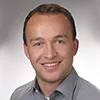Make vs. Buy in Gene and Cell Therapy and the update on PIC/S Annex 2A Revision for ATMPs will be the topics during the ATMP Session. Which considerations should be used in determining whether an advanced therapy company should manufacture therapies internally, utilize external third-party manufacturers or use a hybrid approach? This presentation from Project Farma explores the rationale of cell and gene therapy companies using an external CMO or relying on internal manufacturing.
Francesco Cicirello’s update on PIC/S Annex 2A Revision for ATMPs will provide a view of his former position as Senior Subject Matter Expert and GMP Inspector at the TGA in Australia and Chair of the PIC/S Annex 2 working Group about the challenges providing a Guideline for ATMPs. The Interview with Francesco will cover most ask questions related to the PIC/S Annex 2A. A must to attend for all working with ATMPs. During the Interview the following topics will be discussed. Manufacturing of Autologous Product, the risk of Contamination and Cross-Contamination, supply chain risk, Centralized and Decentralized Manufacturing, Out of Specification OOS release and in which cases okay, mRNA and DNA, closed systems like Isolators and their benefits on safety to the product and to the operator.
Operator Safety is the topic of another highlight during the Conference. The Aseptic Containment and Bio-Safety track will focus on the industry demands for innovations and safe and reliable technologies during fabrication. Operator Safety was one of the major goals to combine the flexibility to handle liquid and lyo products with fully isolated equipment, to guarantee the highest degree for a BSL 2 Viral Vaccine Fill and Finish Facility. The major hurdles from a project execution perspective will be presented from Bavarian Nordic/ CDMO.
Christoph Bierer chair of the ISPE DACH Student Chapter of the Technical University in Munich (TUM) in Germany will present on behalf of the whole TUM student chapter their work on “Which technical and organizational measures are necessary to operate the pharmaceutical product during commercial production according their individual biosafety levels?” How can the operator, the product and the environment be protected? Which distribution routes for biological substances have to be considered and how can they be contained?
Thomas Thurn from Janssen and myself will present on Viable Monitoring for fully automated robotic filling solutions. More than one year ago I founded the ISPE DACH Special Interest Group SIG Future Robotics. How to automize Viable Environmental Monitoring, how to use novel technologies as Rapid Micro Methods (RMM) as already mentioned in the EU GMP Draft Annex 1, and what the challenges are to achieving RMM GMP compliance.
Ajinomoto Bio-Pharma Services, a full CDMO located in sunny San Diego, will present their results on Occupational Safety Measurements for extremely low Permitted Daily Exposure PDE levels on their latest installation of a Vial Filling line. The presenter will be Tom Evens, Director of Safety Health & Environment.
The 2021 ISPE Aseptic Conference will be the highlight of 2021 for me. We’ll celebrate the 30th anniversary of the conference with intensive networking and a lot of highlights you should not miss. I’m proud of being part of the program committee for the 2021 conference. I’ll do my best to serve your needs and interests on GMP, Aseptic Processing, ATMPs, Contamination and Cross Contamination Control during the 2 days and welcome you to join us and be part of the ISPE Aseptic family.
Learn More







